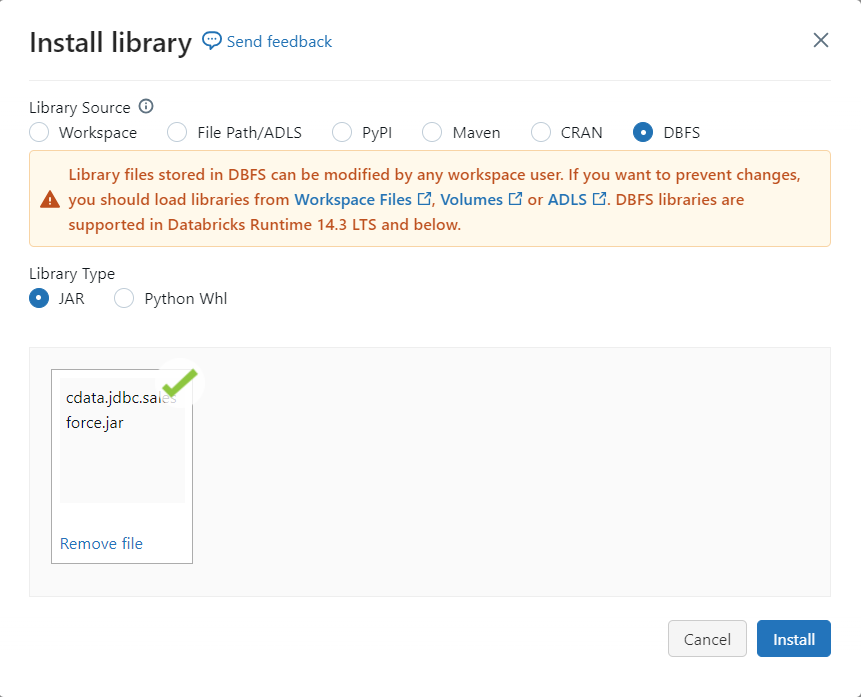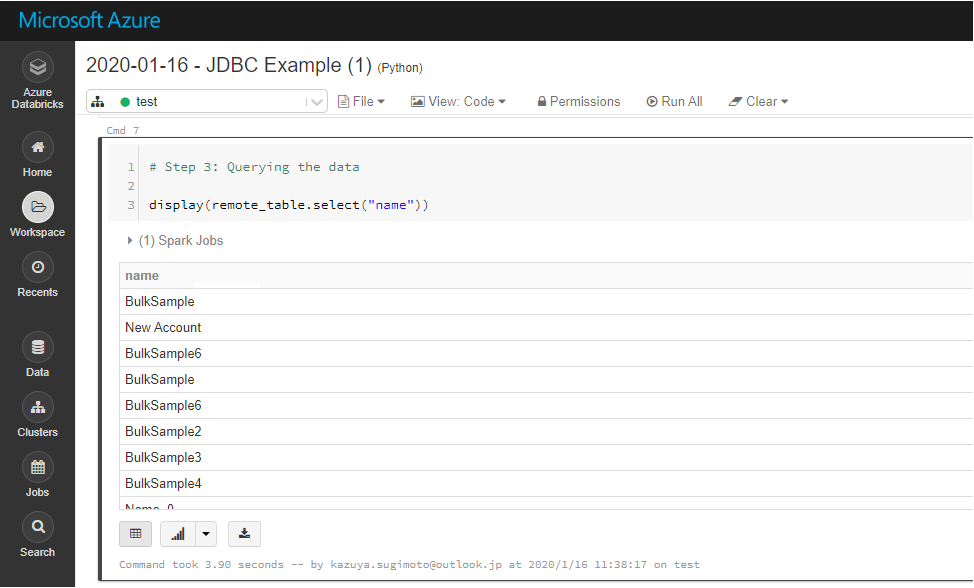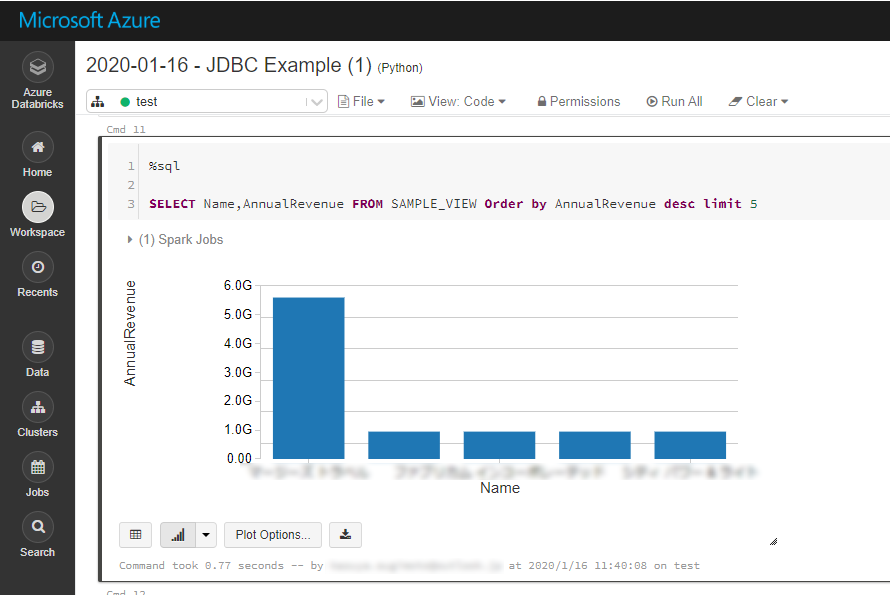Discover how a bimodal integration strategy can address the major data management challenges facing your organization today.
Get the Report →How to connect and process SharePoint Data from Azure Databricks
Use CData, Azure, and Databricks to perform data engineering and data science on live SharePoint Data
Databricks is a cloud-based service that provides data processing capabilities through Apache Spark. When paired with the CData JDBC Driver, customers can use Databricks to perform data engineering and data science on live SharePoint data. This article walks through hosting the CData JDBC Driver in Azure, as well as connecting to and processing live SharePoint data in Databricks.
With built-in optimized data processing, the CData JDBC driver offers unmatched performance for interacting with live SharePoint data. When you issue complex SQL queries to SharePoint, the driver pushes supported SQL operations, like filters and aggregations, directly to SharePoint and utilizes the embedded SQL engine to process unsupported operations client-side (often SQL functions and JOIN operations). Its built-in dynamic metadata querying allows you to work with and analyze SharePoint data using native data types.
About SharePoint Data Integration
Accessing and integrating live data from SharePoint has never been easier with CData. Customers rely on CData connectivity to:
- Access data from a wide range of SharePoint versions, including Windows SharePoint Services 3.0, Microsoft Office SharePoint Server 2007 and above, and SharePoint Online.
- Access all of SharePoint thanks to support for Hidden and Lookup columns.
- Recursively scan folders to create a relational model of all SharePoint data.
- Use SQL stored procedures to upload and download documents and attachments.
Most customers rely on CData solutions to integrate SharePoint data into their database or data warehouse, while others integrate their SharePoint data with preferred data tools, like Power BI, Tableau, or Excel.
For more information on how customers are solving problems with CData's SharePoint solutions, refer to our blog: Drivers in Focus: Collaboration Tools.
Getting Started
Install the CData JDBC Driver in Azure
To work with live SharePoint data in Databricks, install the driver on your Azure cluster.
- Navigate to your Databricks administration screen and select the target cluster.
- On the Libraries tab, click "Install New."
- Select "Upload" as the Library Source and "Jar" as the Library Type.
- Upload the JDBC JAR file (cdata.jdbc.sharepoint.jar) from the installation location (typically C:\Program Files\CData[product_name]\lib).

Connect to SharePoint from Databricks
With the JAR file installed, we are ready to work with live SharePoint data in Databricks. Start by creating a new notebook in your workspace. Name the notebook, select Python as the language (though Scala is available as well), and choose the cluster where you installed the JDBC driver. When the notebook launches, we can configure the connection, query SharePoint, and create a basic report.
Configure the Connection to SharePoint
Connect to SharePoint by referencing the class for the JDBC Driver and constructing a connection string to use in the JDBC URL. Additionally, you will need to set the RTK property in the JDBC URL (unless you are using a Beta driver). You can view the licensing file included in the installation for information on how to set this property.
driver = "cdata.jdbc.sharepoint.SharePointDriver" url = "jdbc:sharepoint:RTK=5246...;User=myuseraccount;Password=mypassword;Auth Scheme=NTLM;URL=http://sharepointserver/mysite;SharePointEdition=SharePointOnPremise;"
Built-in Connection String Designer
For assistance in constructing the JDBC URL, use the connection string designer built into the SharePoint JDBC Driver. Either double-click the JAR file or execute the jar file from the command-line.
java -jar cdata.jdbc.sharepoint.jar
Fill in the connection properties and copy the connection string to the clipboard.
Set the URL property to the base SharePoint site or to a sub-site. This allows you to query any lists and other SharePoint entities defined for the site or sub-site.
The User and Password properties, under the Authentication section, must be set to valid SharePoint user credentials when using SharePoint On-Premise.
If you are connecting to SharePoint Online, set the SharePointEdition to SHAREPOINTONLINE along with the User and Password connection string properties. For more details on connecting to SharePoint Online, see the "Getting Started" chapter of the help documentation

Load SharePoint Data
Once the connection is configured, you can load SharePoint data as a dataframe using the CData JDBC Driver and the connection information.
remote_table = spark.read.format ( "jdbc" ) \ .option ( "driver" , driver) \ .option ( "url" , url) \ .option ( "dbtable" , "MyCustomList") \ .load ()
Display SharePoint Data
Check the loaded SharePoint data by calling the display function.
display (remote_table.select ("Name"))

Analyze SharePoint Data in Azure Databricks
If you want to process data with Databricks SparkSQL, register the loaded data as a Temp View.
remote_table.createOrReplaceTempView ( "SAMPLE_VIEW" )
The SparkSQL below retrieves the SharePoint data for analysis.
% sql SELECT Name, Revenue FROM MyCustomList
The data from SharePoint is only available in the target notebook. If you want to use it with other users, save it as a table.
remote_table.write.format ( "parquet" ) .saveAsTable ( "SAMPLE_TABLE" )

Download a free, 30-day trial of the CData JDBC Driver for SharePoint and start working with your live SharePoint data in Azure Databricks. Reach out to our Support Team if you have any questions.





